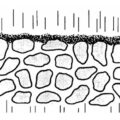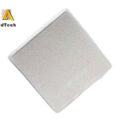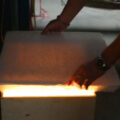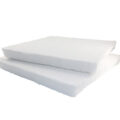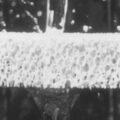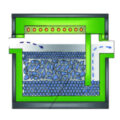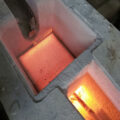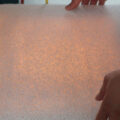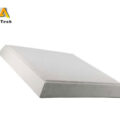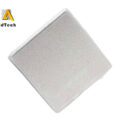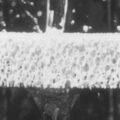The ceramic filter plate separates the inclusions through the three mechanisms of sieving, cake, and deep bed filtration.
Three Filtration Mechanisms for Molten Aluminum
Screening Filtration
Mechanical filtration (screening): when the size of the inclusions is larger than the pore size of the filter plate, the filter plate acts like a sieve to block the inclusions from passing through. Traditional glass fiber cloth filtration adopts this filtration mechanism.
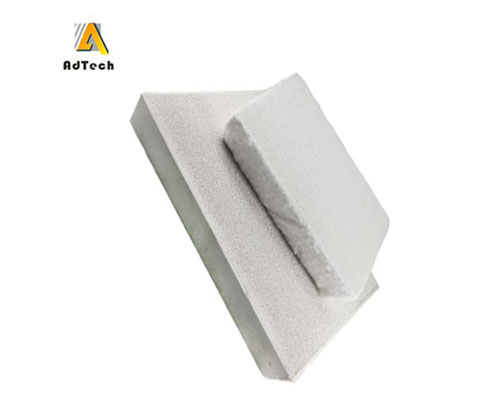
Cake Filtration
Sedimentary layer filtration(cake): After the previously blocked inclusions form a continuous layer on the surface of the filter plate, the pore size for filtering is no longer the pore size of the filter plate, but the pore size of the newly formed cake layer. As the cake layer grows thicker, the gaps on it become smaller and smaller, and many inclusions will be trapped on the surface and internal gaps of the cake layer. At the same time, the resistance of the filter plate to the aluminum liquid continues to increase. After reaching a certain level, it is difficult for the aluminum liquid to pass through the filter plate. At this time, the filter plate should be scrapped. During the filtration process, the obvious change into the cake mode is the gradual increase in the pressure of the molten aluminum.

Deep Bed Filtration
Deep bed filtration: When the inclusions that are much smaller than the filter pore size enter the ceramic filter plate with the aluminum liquid, they are captured by the inner wall of the filter plate pore size. The thicker the filter plate, the greater the effect of this model. This mode can filter out inclusions around 20um in size.
Whether the deep bed mode occurs depends mainly on whether the inclusion particles can be retained after colliding with the inner wall of the filter plate. The path in the filter plate is tortuous and rough. When the aluminum liquid passes through the tortuous and communicating holes in the ceramic filter plate, the internal inclusions are deposited under the action of hydrodynamics, inertia, interception, collision, adsorption, etc. On the wall of the channel, so as to get clean aluminum liquid.
In addition, the ceramic filter plate is not simply a mechanical barrier to inclusions, but physical and chemical adsorption, micropores, and chemical adsorption on the inner wall of the filter plate also promote the retention of inclusions. Therefore, the size of the filtered inclusions is much smaller than the size of the filter plate holes.

Three Filtration Mechanisms
When filtering with ceramic filter plates, the above three mechanisms are combined. In the initial stage, surface sieving intercepts large particles, while small particles are removed by a deep filtration mechanism. With the formation of surface deposits, the deposited layer can intercept both large particles and small particles. And small inclusion particles in the mesh are captured through the deep filtering mechanism, and the filtering effect of the ceramic foam filter plate will be better. When the adsorbed particles reach saturation, that is, when the number of particles adsorbed from the melt is equal to the number of particles taken away by the flowing melt, the slag removal capacity decreases.

